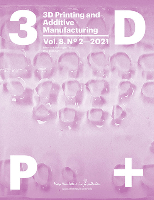
3D Printing and Additive Manufacturing
Scope & Guideline
Advancing Knowledge in 3D Printing Excellence
Introduction
Aims and Scopes
- Additive Manufacturing Techniques:
The journal explores various additive manufacturing techniques such as selective laser melting, fused deposition modeling, and binder jetting, highlighting their principles, advancements, and applications across different industries. - Material Development and Characterization:
A core focus is on the development of new materials for 3D printing, including biocompatible materials, composites, and innovative polymers, along with their mechanical and thermal characterization. - Biomedical Applications:
The journal features research on the application of 3D printing in medicine, including tissue engineering, drug delivery systems, and the creation of personalized medical devices. - Process Optimization and Quality Control:
Research addressing the optimization of printing processes, defect detection, and quality control measures is emphasized, ensuring the reliability and performance of 3D printed products. - Sustainability and Eco-Friendly Practices:
There is a growing emphasis on sustainable practices in additive manufacturing, including the use of biodegradable materials and recycling of waste products to promote environmental responsibility. - Innovative Applications Across Industries:
The journal covers a diverse range of applications in various fields, including aerospace, automotive, architecture, and consumer products, showcasing the versatility of 3D printing technologies.
Trending and Emerging
- 4D Printing and Smart Materials:
Research on 4D printing, which involves materials that can change shape or function over time in response to stimuli, is gaining momentum, indicating a broader interest in dynamic and responsive materials. - Bioprinting and Tissue Engineering:
The field of bioprinting is rapidly expanding, with increasing research focusing on the development of tissue scaffolds, organ models, and regenerative medicine applications. - Integration of Artificial Intelligence and Machine Learning:
There is a growing trend towards employing AI and machine learning to optimize additive manufacturing processes, improve defect detection, and enhance material properties prediction. - Sustainability and Green Manufacturing Practices:
Research emphasizing eco-friendly materials, recycling processes, and sustainable practices in additive manufacturing is on the rise, reflecting a heightened awareness of environmental impacts. - Customized and Personalized Products:
The trend towards customization in manufacturing is reflected in increasing research on personalized products, particularly in healthcare, where tailored solutions are becoming more prevalent. - Advanced Composite Materials:
There is a marked increase in studies focused on advanced composite materials for additive manufacturing, driven by the demand for lightweight and high-performance applications in aerospace and automotive industries.
Declining or Waning
- Traditional Manufacturing Comparisons:
Research comparing traditional manufacturing methods with additive manufacturing has decreased, as the focus shifts towards integrating additive processes within existing manufacturing systems rather than direct comparisons. - Basic Material Science Studies:
There has been a notable decline in studies solely focused on the basic material science of traditional polymers without a direct application to additive manufacturing processes, as researchers prioritize applied research. - General Reviews of Additive Manufacturing:
While comprehensive reviews are still valuable, the frequency of broad, non-specific reviews of additive manufacturing processes has decreased, with more emphasis on niche topics and specific applications. - Single-Technology Focus:
There is less emphasis on research that solely focuses on one specific technology (e.g., only FDM or only SLA), as the field increasingly embraces hybrid approaches and interdisciplinary applications. - Historical Perspectives and Overviews:
Research articles providing historical overviews of additive manufacturing technologies are becoming less common, as the field matures and the focus shifts to future directions and innovations.
Similar Journals
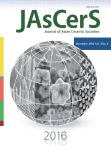
Journal of Asian Ceramic Societies
Unlocking the potential of ceramic science.The Journal of Asian Ceramic Societies, published by Taylor & Francis Ltd, is a peer-reviewed open-access journal that has been at the forefront of ceramic research since its inception in 2013. With an ISSN of 2187-0764, this esteemed journal is dedicated to advancing the scientific understanding of ceramics and composites, bolstered by an impressive ranking of Q2 in the field of Materials Science. Covering a wide range of topics pertinent to ceramics, the journal aims to foster collaboration among researchers, professionals, and students across Asia and beyond. Its commitment to accessibility allows a global audience to engage with cutting-edge research, reflected in its Scopus ranking of #45 out of 127 in the Materials Science category. With a publication timeline extending to 2024, the Journal of Asian Ceramic Societies is an indispensable resource for anyone looking to stay informed on the latest developments and innovations in ceramic technology.
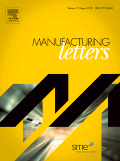
Manufacturing Letters
Empowering Insights in Industrial Engineering.Manufacturing Letters is a premier academic journal published by Elsevier, dedicated to advancing the fields of Industrial and Manufacturing Engineering and Mechanics of Materials. Established in 2013, this journal has quickly gained recognition, achieving a Q2 ranking in both disciplines as of 2023, highlighting its significance in the rapidly evolving manufacturing landscape. With an ISSN of 2213-8463, Manufacturing Letters provides a platform for researchers and industry professionals to share critical insights and innovative findings that drive the manufacturing sector forward. The journal is indexed in Scopus, where it ranks in the top 65th percentile for Industrial and Manufacturing Engineering and the 61st percentile for Mechanics of Materials, reflecting its impact in the scientific community. While primarily accessible through subscription, Manufacturing Letters aims to facilitate knowledge exchange, promote sustainable practices, and foster collaboration among individuals passionate about enhancing manufacturing efficiency and material development. This journal is indispensable for anyone looking to contribute to or understand the future of manufacturing.
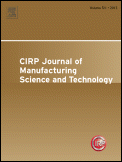
CIRP Journal of Manufacturing Science and Technology
Shaping the Future of Industrial Engineering ResearchCIRP Journal of Manufacturing Science and Technology is a highly respected publication in the field of Industrial and Manufacturing Engineering, published by Elsevier in the Netherlands. With a Q1 ranking in its category and a Scopus ranking of #51 out of 384, the journal reflects its prominence and contribution to the scientific community, boasting an impressive percentile ranking of 86th. Since its inception in 2008, the journal has served as a pivotal platform for disseminating cutting-edge research in manufacturing science, promoting advancements in technology and process optimization. While not an open-access journal, the content is available through institutional subscriptions, ensuring that critical findings reach a wide audience of researchers, professionals, and students. The CIRP Journal aims to foster innovation and collaboration among experts, making it an essential resource for those looking to stay at the forefront of manufacturing research and technology.

MATERIALE PLASTICE
Connecting Scholars in the World of Polymer ResearchMATERIALE PLASTICE is a distinguished academic journal published by REVISTA CHIMIE SRL in Romania, focusing on the fields of Chemistry, Materials Science, and Engineering. With an ISSN of 0025-5289 and an E-ISSN of 2668-8220, this journal has a historical commitment to advancing the study of polymers and plastics since its inception in the early 1970s. Although classified in the Q4 category across multiple disciplines including miscellaneous chemistry and materials chemistry as of 2023, it serves as an important forum for researchers and professionals dedicated to innovative materials research and development. The journal’s resources, though not openly accessible, are pivotal for scholars seeking to deepen their knowledge in the mechanics of materials and interdisciplinary applications. MATERIALE PLASTICE is not only a repository of significant research findings but also a platform for fostering collaboration and discussion among a global audience that continues to strive for scientific excellence in polymer and materials studies.
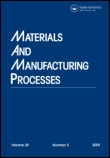
MATERIALS AND MANUFACTURING PROCESSES
Driving Impactful Discoveries in Materials and Manufacturing.MATERIALS AND MANUFACTURING PROCESSES, published by Taylor & Francis Inc, is a leading journal dedicated to the dynamic fields of materials science and manufacturing engineering. Established in 1989, the journal has built a formidable reputation, exemplified by its prestigious Q1 rankings in 2023 across various categories, including Industrial and Manufacturing Engineering, Materials Science, Mechanical Engineering, and Mechanics of Materials. With a robust focus on innovative research and the latest advancements in manufacturing techniques and materials application, the journal serves as a vital resource for researchers, professionals, and students alike. The journal is indexed in renowned databases and boasts high impact factors, reflecting its influence in the academic community. Although it does not offer open access, it provides extensive platforms for disseminating crucial findings that push the boundaries of engineering and science. For those seeking impactful research contributions, MATERIALS AND MANUFACTURING PROCESSES remains at the forefront of fostering scholarly dialogue and advancing the field.
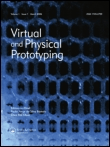
Virtual and Physical Prototyping
Bridging Theory and Practice in PrototypingVirtual and Physical Prototyping is a premier scholarly journal published by Taylor & Francis Ltd, which has established itself as a leading platform for innovative research in the fields of Computer Graphics, Computer-Aided Design, Industrial and Manufacturing Engineering, Modeling and Simulation, and Signal Processing. Since its inception in 2006, the journal has gained significant recognition, currently ranked in the Q1 quartile in multiple categories, reflecting its high impact and rigorous standards of scholarship. Now an Open Access journal as of 2023, it provides a unique opportunity for researchers, professionals, and students to share their work widely and engage with a global audience. With its strategic emphasis on the convergence of virtual and physical prototyping technologies, this journal contributes vital knowledge and insights that drive innovation and development in manufacturing processes and design methodologies. Located in the United Kingdom, its comprehensive approach to both theoretical and practical aspects of prototyping ensures that it remains an essential resource for advancing the respective fields it represents.

METALLURGIA ITALIANA
Unveiling the Science of Materials EngineeringMETALLURGIA ITALIANA, an esteemed journal published by the ASSOCIAZIONE ITALIANA METALLURGIA, specializes in the fields of condensed matter physics, mechanics of materials, and metals and alloys. With a history spanning from 1969 to 2024, this Italian journal has consistently contributed to the scholarly conversation surrounding metallurgical sciences and materials engineering. Despite its Q4 ranking in several categories, the journal provides a critical platform for emerging research and advancements in metallurgy, encouraging interdisciplinary dialogue among academics, professionals, and students. Readers can benefit from valuable insights into the latest developments and applications in the field, supported by the journal's commitment to fostering academic rigor and innovation. While access options currently do not include open access, METALLURGIA ITALIANA remains a cherished resource for those dedicated to exploring the nuances of material properties and applications.
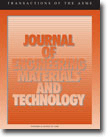
JOURNAL OF ENGINEERING MATERIALS AND TECHNOLOGY-TRANSACTIONS OF THE ASME
Shaping the future of materials science through rigorous research.JOURNAL OF ENGINEERING MATERIALS AND TECHNOLOGY-TRANSACTIONS OF THE ASME is a premier journal published by the American Society of Mechanical Engineers (ASME), dedicated to advancing the field of engineering materials and technology. With an ISSN of 0094-4289 and E-ISSN 1528-8889, this journal has provided invaluable insights since its inception in 1973. Operating from its headquarters in New York, United States, it serves a global audience of researchers, professionals, and students alike. The journal is recognized for its rigorous peer-review process and its commitment to disseminating high-quality research, currently holding a Q3 quartile ranking across multiple categories including Condensed Matter Physics, Materials Science, Mechanical Engineering, and Mechanics of Materials. With a focus on exploring innovative materials and their applications, it aims to foster collaboration and discovery in the engineering community. Although it is not an open-access journal, it continues to play a vital role in shaping the future of engineering materials research up to 2024. Researchers and practitioners will find in this journal a significant platform to support the development and understanding of engineering materials, making contributions that resonate through academia and industry.

Progress in Additive Manufacturing
Unleashing Potential: Your Gateway to Additive Manufacturing Insights.Progress in Additive Manufacturing is a leading academic journal published by SpringerNature, dedicated to advancing the field of additive manufacturing (AM) through high-quality, peer-reviewed research. Since its inception in 2016, this journal has rapidly established itself as a significant platform for disseminating innovative methodologies, technological advancements, and comprehensive reviews in the area of AM, contributing to its Q1 status in the Industrial and Manufacturing Engineering category for 2023. With an impressive Scopus rank of #72 out of 384, positioned in the 81st percentile, it underscores the journal’s critical role in fostering scholarly communication among researchers, professionals, and students worldwide. The journal is accessible globally, providing an invaluable resource for anyone involved in industrial engineering and manufacturing sectors seeking to stay abreast of the latest developments and best practices in additive manufacturing.

Materia-Rio de Janeiro
Exploring the intersection of materials and innovation.Materia-Rio de Janeiro is a distinguished open-access journal published by UNIV FED RIO DE JANEIRO, LAB HIDROGENIO, dedicated to advancing knowledge in the fields of Chemistry, Materials Science, and Physics. Since its inception in 2006, the journal has established a platform for the dissemination of innovative research, fostering collaboration among researchers globally. The journal's commitment to open access promotes the widespread availability of valuable scientific findings, making it an essential resource for academia and industry professionals alike. With a focus on diverse disciplines, Materia-Rio de Janeiro holds a Q4 classification in multiple categories for 2023, indicating its relevance in the expansive landscape of materials research. Operating from Rio de Janeiro, Brazil, this journal serves as a vital conduit for emerging scientific insights, hence delivering impactful contributions to the global research community.